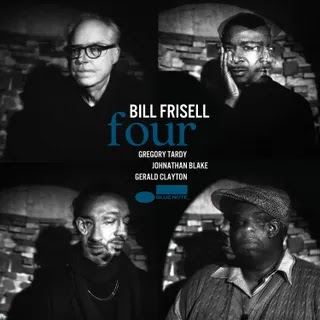On his latest project, the jazz drummer and innovative producer brings the heart of the famous Blue Note catalog into the present.
By the time Blue Note gave Makaya McCraven access to their archives to use as the foundation for his new album, the self-proclaimed “beat scientist” had already been swimming in it for years. The catalog is so essential to the jazz canon—and McCraven’s style in general—that he had already worked with some of the tracks, like trumpeter Kenny Dorham’s 1961 hard bop tune “Sunsets.” The theme persists throughout Deciphering the Message; McCraven is not just exploring Blue Note’s catalog, but his own relationship with it.
With such a sprawling collection of work to pull from, McCraven narrowed his focus to records from the ’60s and earlier, which helps Deciphering the Message maintain the consistency of a single session despite pulling from more than a dozen different records. Art Blakey and the Jazz Messengers form the connective tissue; McCraven uses vocal samples from Blakey’s records as a de facto MC, like the “Pee Wee Marquette Announcement” from A Night at Birdland, Vol. 1 or “Introduction by Art Blakey” from At the Jazz Corner of the World, Vol. 1. And sitting at the center of his own orbit of talented contemporary musicians, McCraven spends as much of the album in conversation with Blakey—the drummer, the bandleader, the mentor—as he does with his music.
Through the second half of the 20th century, Art Blakey’s band served as a finishing school of sorts for some of jazz’s brightest young stars, offering early platforms to the likes of Lonnie Liston Smith, Terence Blanchard, both Wynton and Branford Marsalis, and many, many more. Here, McCraven manages to assemble a virtual all-star band from Jazz Messenger alumni (Horace Silver, Kenny Dorham, Hank Mobley, Wayne Shorter) and his own crew of contemporary virtuosos (Jeff Parker, Junius Paul, Marquis Hill, Greg Ward). He intentionally obfuscates the line between samples and new recordings, between drum machines and drum kits. The result is something familiar yet otherworldly, an album full of collaborations between young talent and old legends, some of whom passed long ago.
Collaborative as it is, Deciphering the Message began as a solitary process, with McCraven digging through Blue Note’s crates alone to build a foundation. He’d pull loops and rearrange parts, then overdub bass, keyboards, and drums. It mirrors the workflow of a hip-hop producer, not unlike J Dilla and Madlib, who serve as his closest contemporary analogues. He’d send those sketches to friends like Parker, Paul, and Hill, who would record their parts and send them back, giving him another pass at the arrangement with fresh material informed by the originals.
There’s a scholarly approach to the record, a study in non-linear composition, and while there are infinitely more vibes here than an academic text, a closer look reveals a thesis on McCraven’s philosophy of using the recording studio as an instrument. He eases into this on the first track, inserting his own drum, bass, and percussion tracks into saxophonist Hank Mobley’s 1966 song, “A Slice of the Top.” McCraven’s rhythms inject new energy, propelling old songs into the new millennium with a beat-driven, hip-hop feel. And Joel Ross’ vibraphone, Jeff Parker and Matt Gold’s guitars, Marquis Hill’s trumpet, Junius Paul’s bass, Greg Ward’s alto and De’Sean Jones’ tenor saxophones...they all feed off of it, sometimes blending into the original composition, sometimes piercing through the mix to demand attention, like the familiar intonation of Parker’s electric guitar on Kenny Dorham’s “Sunset,” which rises and falls like a horn with a squeal filtered through a distortion pedal.
McCraven carved out his own space in contemporary jazz on In The Moment (2015) and Universal Beings (2018), sampling his own band’s improvised sessions, then pulling, stretching, and rearranging the pieces until it shaped something new. And his stunning recreation of Gil-Scott Heron’s I’m New Here gave new context to the incendiary words of the famous poet and musician. With each subsequent project, he continues a lifelong conversation with the music that’s shaped him, leaving his own mark on it in turn.
Deciphering the Message takes it further: it blurs the line of what a “real” band is. Is it a group of people in a room, or can it stretch across time, including both the living and the dead? McCraven said he wants to introduce a new generation to these records that were foundational not only to him, but to music itself. These artists helped draft a blueprint for the way contemporary musicians improvise; soaring and swerving in and out of the pocket, yet always pulled back in by the gravitational pull of the rhythm section. With these improvised riffs, they forged building blocks for an entire wave of hip-hop—these are the records that MPC maestros like Pete Rock and DJ Premier, or Madlib and J Dilla would pick through with tweezers when making the beats that would come to define a generation. Deciphering the Message helps connect these dots. But it also plays like a fantasy come to life, a dream set at the Blue Note, with long-lost titans beaming in from the afterlife to sit in with the young blood, like proud parents watching their children surpass them.
















0 comments:
Post a Comment